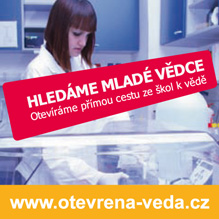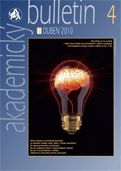New ERC project in the Institute of Physics of the Academy of Sciences
22 Sep 2014

Joerg Wunderlich from the Department of Spintronics and Nanoelectronics of the Institute of Physics ASCR, with his colleagues from the UK and Germany, was awarded the prestigious ERC Synergy Grant for the project “Spin-charge conversion and spin caloritronics at hybrid organic-inorganic interfaces”. The project has started in August 2014 and will run till July 2020. Besides the Institute of Physics, the other participating organizations are the University of Cambridge, Hitachi Cambridge Laboratory, Imperial College in London, and the Johannes Gutenberg University in Mainz.
Connecting the worlds of semiconductors and magnets:
20 Aug 2014

Researchers from the Institute of Physics ASCR realize an efficient spin-charge converter
Current information technologies are either charge-based or spin-based. Semiconductor microprocessors are prime examples among the large variety of charge-based devices. They utilize the possibility offered by semiconductors to easily electrically manipulate and detect their electronic charge states representing the zeros and ones. Spin-based devices operate on an entirely distinct principle.
Institute of Rock Mechanics and Structure ASCR has become a Worldwide Centre of Excellence
14 Jul 2014

The scientific teams of the Academy of Sciences of the CR and Charles University have received significant awards for their results so far in long-term joint research of landslides. The Institute of Rock Mechanics and Structure (ÚSMH) of the ASCR, v. v. i, along with the Faculty of Science of CU obtained the title of a Worldwide Centre of Excellence for Research of the Risks of Landslides in Beijing in June of this year.
The FUNBIO project – studying materials on the boundary of life
19 May 2014

Physics helps economy: a new monograph on Econophysics from the Institute of Physics, AS CR
12 Mar 2014

Importance and impact of methods and techniques developed for studying physical problems has outreached the realm of natural sciences. Methods of quantum physics and statistical mechanics find more and more applications in biology, economy, informatics, or sociology. Physics has become one of the most important components of a number of new interdisciplinary research fields. Econophysics utilises methods of statistical mechanics and theory of phase transitions to model and understand processes in economy and financial markets.
Relativity shakes a magnet
4 Mar 2014

Researchers from Institute of Physics AS CR demonstrate a new principle for magnetic recording
Current technologies for writing, storing, and reading information are either charge-based or spin-based. Semiconductor flash or random access memories are prime examples among the large variety of charge-based devices. They utilize the possibility offered by semiconductors to easily electrically manipulate and detect their electronic charge states representing the “zeros” and “ones”. The downside is that weak perturbations such as impurities, temperature change, or radiation can lead to uncontrolled charge redistributions and, as a consequence, to data loss.
Magnetic inside but not on outside
3 Feb 2014

A new theory explaining the origin of hydrocarbon molecules in interstellar space
22 Jan 2014

A Czech mathematician has acquired a prestigious European grant
1 Oct 2013

Czech physicists have revealed another law of friction force
25 Sep 2013

Mars: The Next Step
19 Sep 2013

A new method of Brno scientists can non-destructively study living organisms
4 Sep 2013

ELI European Project: Construction Begins
28 May 2013

Other important steps necessary for the globally unique multifunction laser centre, ELI Beamlines, to be created in Dolní Břežany near Prague were taken by the Institute of Physics of the ASCR. On Friday, 24 May 2013, the winner of the competition for the contractors of the main phase of the building of the laser centre, the group of Metrostav, VCES and OHL ŽS, was presented at the headquarters of the Academy of Sciences of the CR in Prague. The new key partner of the project was also announced – the first-class American research centre, the Lawrence Livermore National Laboratory. American specialists in cooperation with Czech colleagues will develop a unique laser system worth CZK 1.1 billion. For more information, see the press release.





